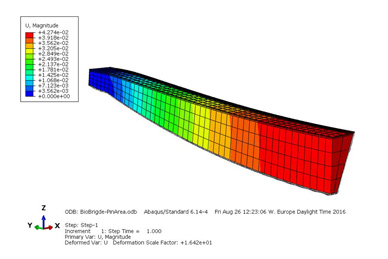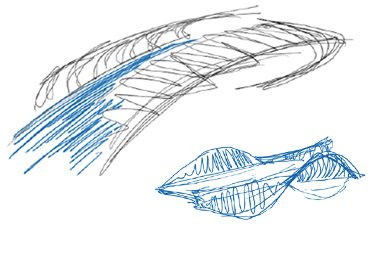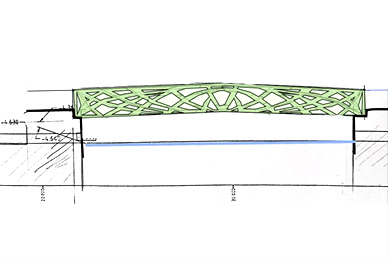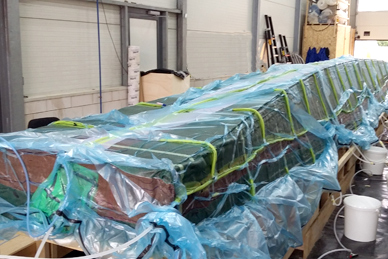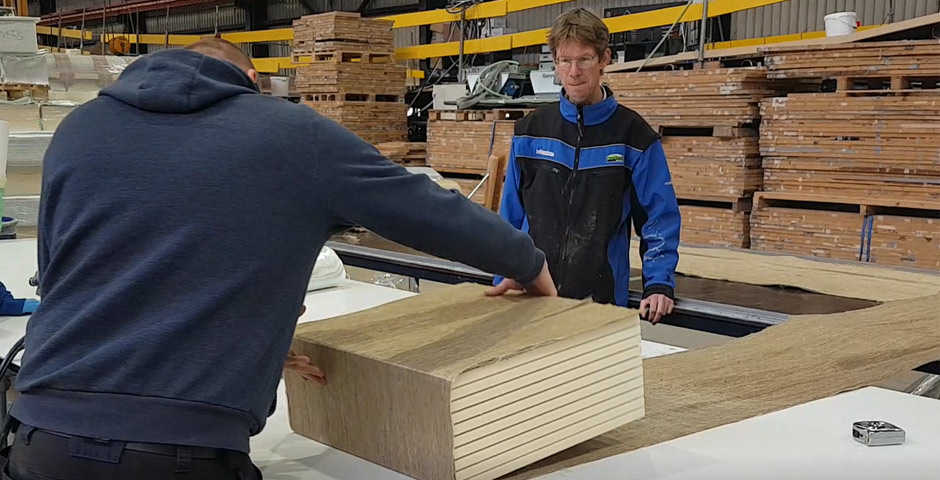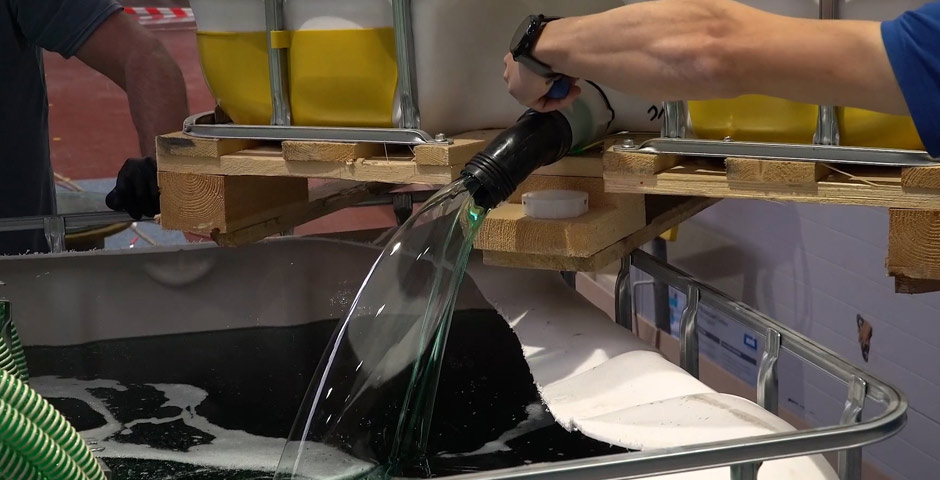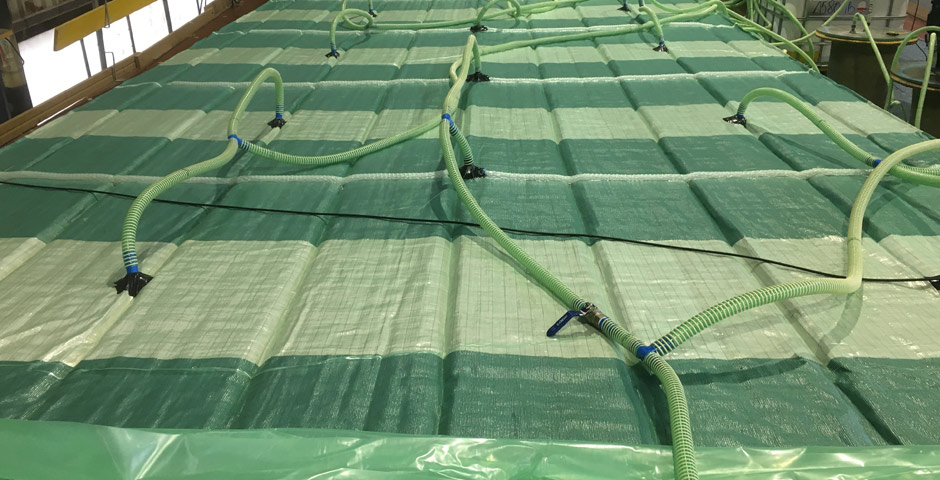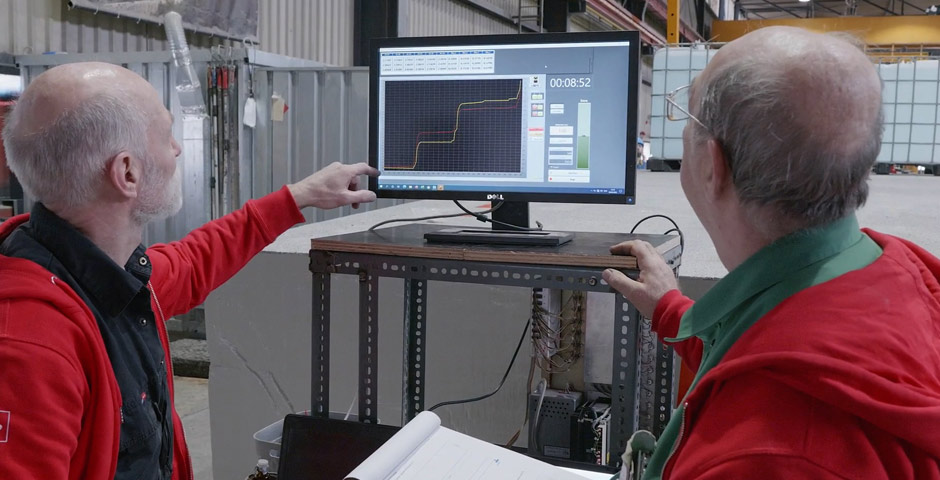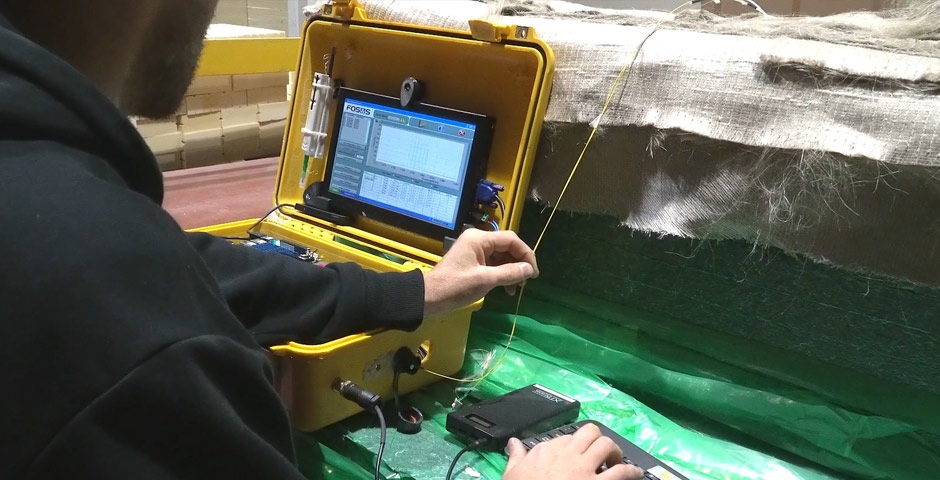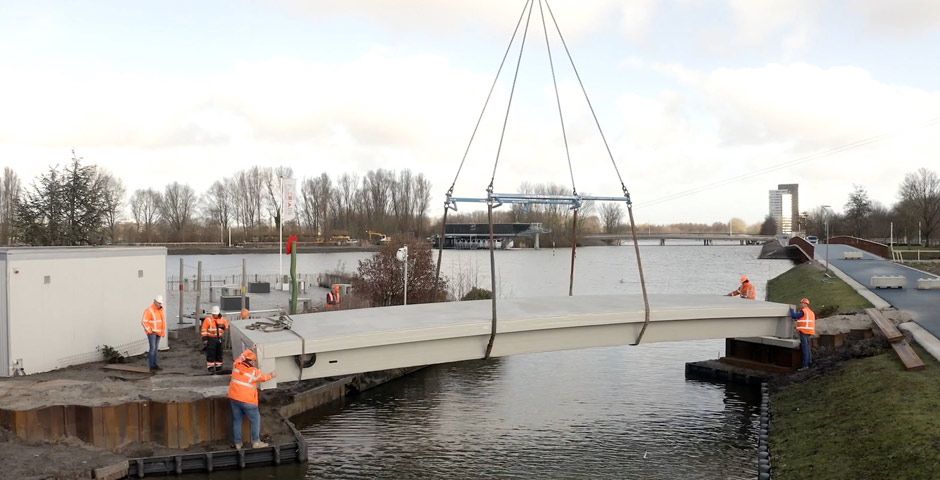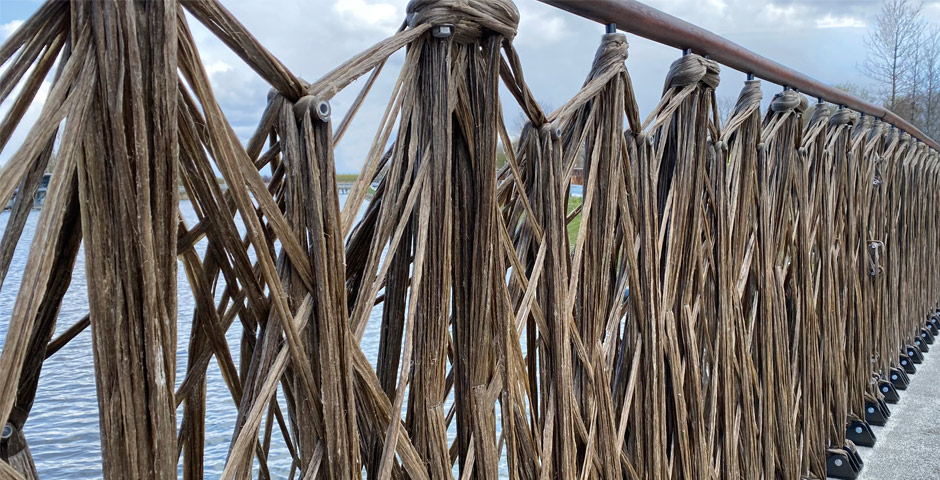The innovative bridges are created in the context of the Bio-Economy Strategy of the European Union and are supported by the Interreg North-West Europe Programme. The project is led by the Eindhoven University of Technology, which is working with a total of 14 partners from science, industry and local authorities to complete three bridges at the locations Almere (NL), Ulm (DE) and Bergen Op Zoom (NL) by 2023.
TU/e Eindhoven, University of Technology
TU/e is a prominent University in the Netherlands, with high ranked national and international research and education and a strong commitment to connecting and bringing research and technology innovations to market with a strong network. The Chair Innovative Structural Design has achieved advances in research and design regarding resource efficient structures. It was leader in the 4TU project Biobased Bidge, realized in 2016 and since then followed up with ongoing research in this field.
Link to the website: www.tue.nl
KU Leuven
The Composite Materials Group of the Department of Materials Engineering of KU Leuven has about 35 years of experience in research on many aspects of composites technology, from processing to testing and analysing composite materials. Since the late nineties one of the focal points has been natural fibre composites, with the aim to develop more sustainable, environmentally friendly composites. Research on natural fibre composites target the weaker or less developed aspects regarding durability.
Link to the website: www.mtm.kuleuven.be
FiberCore Europe
For the past 10 years FiberCore Europe has put FRP as a construction material on the map. With the construction of more than 1000 bridges worldwide, many of them in the Netherlands, the prefab FRP bridge has become a common sight in everyday scenery. Using the unique InfraCore® technology, FiberCore Europe builds bridges and locks gates with an eye to the future: lightweight, robust, sturdy and durable. With our own factory in Rotterdam and our team of skilled engineers and constructors, we build bridges that require hardly any maintenance and will last for more than 100 years. And that does not have to be in one location; the bridges can easily be removed and replaced.
Link to the website: www.fibercore-europe.com
24SEA
24SEA is the leading independent structural monitoring partner on the Belgium market of Offshore Wind and Marine Renewables. 24SEA offers testing services and develops dedicated short and long-term structural health monitoring systems for offshore structures. Their in-house developed data analysis tools provide the operator with the insights that are crucial to minimize construction and installation costs and reduce their operation, maintenance and inspection costs.
Link to the website: www.24sea.eu
FibR
FibR is a construction company realizing architectural fiber composite structures for load bearing structures, facades, and interiors. The computational design methods and robotic fabrication facilities enable the exploration of a novel design and construction repertoire for resource efficient architectural construction. The interdisciplinary team offers vertically integrated digital construction services across all project phases ranging from concept development, design assist and building component certification to robotic production and on site installation.
Link to the website: www.fibr.tech
Com&Sens
Com&Sens has a long track record of embedding optical fibre sensors in composite structures. In this project, Com&Sens will focus in close cooperation with 24Sea on developing and further improving a method to robustly embed the sensors into the bio-bridge. For the project it is essential to capture the strains and temperature with high accuracy. The optical fibre brag sensors can do so, provided the embedding is of high quality.
Link to the website: https://com-sens.eu
VanHattum en Blankevoort
The core business of VanHattum en Blankevoort is to design, construct and maintain infrastructure and civil projects (e.g. bridges, viaducts, quay walls, locks, water treatment plants etc.) in the Netherlands, since 1831. The main focus of VanHattum en Blankevoort lies on project management and design. It has a clear focus on sustainability and innovation. It has recently constructed a circular viaduct in 2018. Van Hattum & Blankevoort are operating companies of Royal VolkerWessels Stevin NV.
Link to the website: www.volkerinfra.nl
Lineo - groupe NatUp fibres
Lineo - groupe NatUp fibres is a leading provider of natural fibre solutions. It has production sites in France and the United Kingdom. It is a French Norman company specialized in the manufacture of reinforcements based on natural fibres. It manufactures non-woven felts, devoted to the automotive industry, as well as a range of woven fabrics (Lineo range) and non-woven dry or pre-impregnated for composite applications, dedicated to many different fields from sports to furniture or transport.
Link to the website: www.ecotechnilin.com
University of Stuttgart
The University of Stuttgart is a leading technically oriented university with global significance. They progress interdisciplinary integration of engineering. The ITKE BIOMAT institute: www.itke.unistuttgart.de/biomat is famous for investigating and realizing cutting edge structures, i.g. the 2018 experimental biobased pavilion. One of its main goals is to raise and translate ecological concerns in newly developed sustainable smart materials and integrating the architectural and user perspective.
Link to the website: www.itke.uni-stuttgart.de
Energy and Material Transition MNEXT (former: Centre of Expertise Biobased Economy (Avans University of Applied Sciences)
Materialen & Energie Transitie (MNEXT, formerly known as Centre of Expertise Bio Based Economy CoEBBE) of (Avans University of Applied Science with circa 28.000 students) is a research center that stimulates research and knowledge valorization through public-private collaboration stimulating biobased material applications. For this the MNEXT researchers work alongside entrepreneurs in research projects with direct spin-off to education.
Link to the website: www.mnext.nl
Vrije Universiteit Brussels
Vrije Universiteit Brussel has a strong commitment to valorization and successful innovations by well-established relations to industry as well as international research networks. The department of mechanical engineering and acoustics and vibration research group has key expertise in Structural Health Monitoring and data handling, for example on reliability analysis of fatigue damage extrapolations of wind turbines using offshore strain measurements. This expertise will be directed to SCB.
Link to the website: www.vub.be
City of Bergen op Zoom
Bergen op Zoom is a Dutch municipality. Besides all its other tasks and responsibilities, the city owns and maintains many bridges in different sizes and materials. Bergen op Zoom is part of the Biobased Delta in which it co-organizes initiatives on improving sustainability and circularity through the use of bio-based materials. It has already realized bio-based public stairs within its city and it also has collaborated in the realization of a bio-based cladding of an ecoduct: Zoomland viaduct.
Link to the website: www.bergenopzoom.nl
City of Almere
Almere is a municipality with many activities and initiatives around circular and sustainable economy, clean energy and transportation, circular urban developments and with many cradle to cradle approaches in material use and waste treatment. Together with the province of Flevoland it organizes the Floriade 2022, the 7 th world Horticulture Expo with the theme "Growing Green Cities". This Floriade is a living lab which provides an excellent platform for the first SCB investments.
Link to the website: www.almere.nl
City of Ulm
Link to the website: www.ulm.de
Proesler Kommunikation
Proesler Kommunikation is a PR agency with conceptual strength and specialist expertise. They have a sound knowledge of the construction industry, future technologies and sustainable management. As an external press office or supplier for individual projects, tailored PR strategies and communication concepts are created. Strength is the provision of strategic advice to companies/projects and the implementation of successful PR concepts in their relevant target groups and markets.
Link to the website: www.proesler.com



